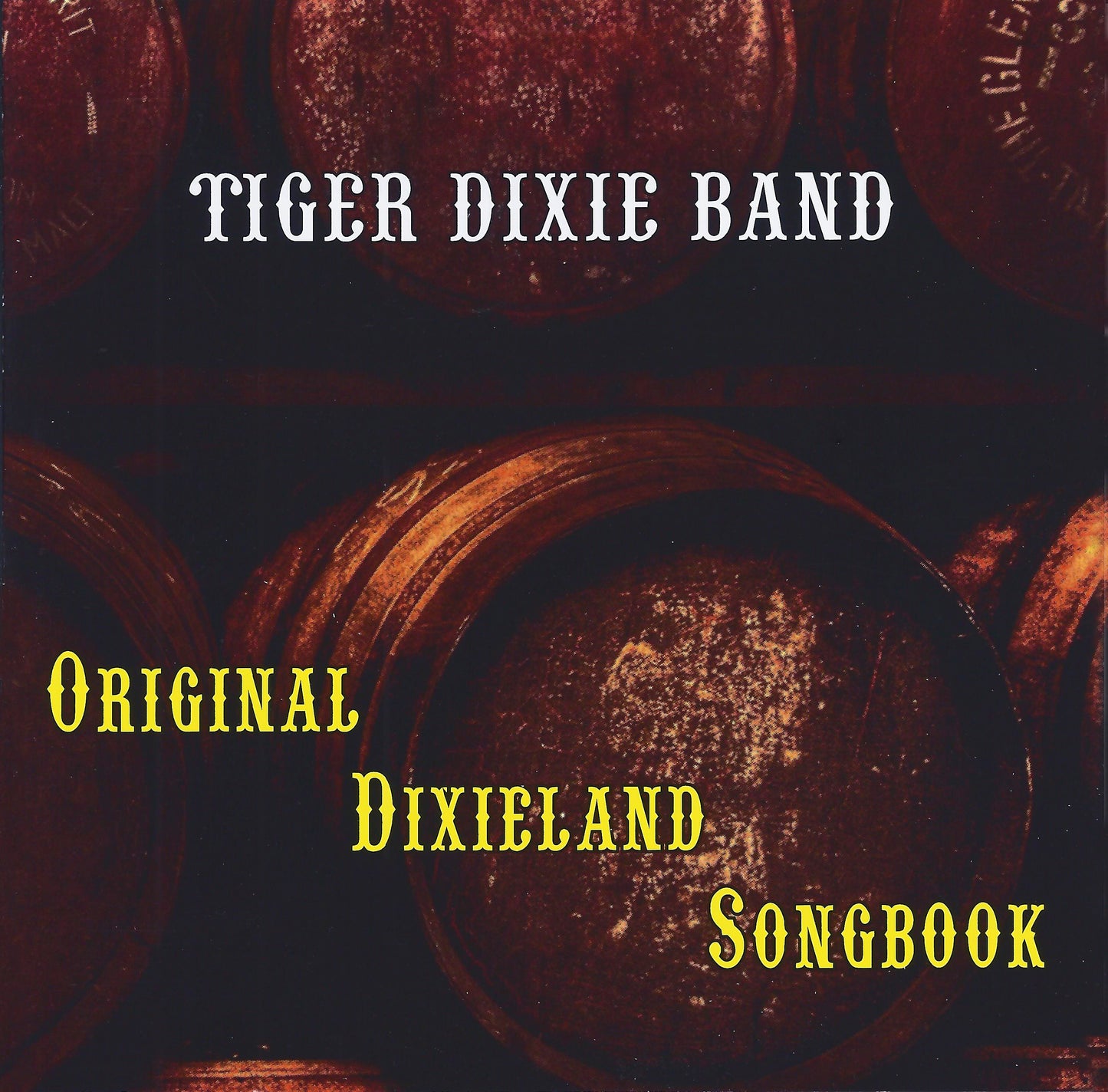Velut Luna
ORIGINAL DIXIE SONGBOOK - TIGER DIXIE BAND
ORIGINAL DIXIE SONGBOOK - TIGER DIXIE BAND
Impossibile caricare la disponibilità di ritiro
ORIGINAL DIXIE SONGBOOK (CVLD251)
Esecutore: TIGER DIXIE BAND
Tracce
- Original Dixieland One-Step (Original Dixieland Jass Band)
- South (Bennie Moten)
- China Boy (trad.)
- Skeleton Jungle (Original Dixieland Jass Band)
- Down by the Riverside (trad.)
- Fidgety Feet (Original Dixieland Jass Band)
- Moten Swing (Bennie Moten)
- At the Jazz Band Ball (Original Dixieland Jass Band) **
- Maple Leaf Rag (Scott Joplin)
- Somebody Stole My Gal (Leo Wood)
- Alabama Jubilee (George L. Cobb)
- Davenport Blues (Bix Beiderbecke)
- Sadie Green, The Vamp of New Orleans (trad.)
- Tiger Rag (Original Dixieland Jass Band)
- Bill Bailey (Hughie Cannon)
- Ice Cream (trad.)
- Amazing Grace (trad.) ***
- When the Saints Go Marching In (trad.)
Paolo Trettel: trumpet
Stefano Menato: clarinet
Fiorenzo Zeni: tenor sax
Luigi Grata: trombone (tuba on track 16)
Andrea Boschetti: banjo – guitar
Renzo De Rossi: piano (baritone sax on track 17)
Giorgio Beberi: bass sax
Claudio Ischia: drums
Note
Quale significato hanno oggi i brani riuniti in questa raccolta proposta dalla Tiger Dixie Band? Si tratta di un repertorio alle origini del jazz, la cui età si aggira ormai attorno ai cento anni, apparso in buona parte nel Sud degli Stati Uniti, che rappresenta una musica nata dall’incontro di culture diverse, europee e africane.
Per mantenendo in sé chi di quel periodo è stato, il jazz ha maturato una propria fisionomia originale, che possiamo a tutti gli effetti definire autenticamente americana.
Anni del secolo scorso, quando fu portata in Europa e in particolare a Parigi, non mancò di colpire l’interesse di artisti e musicisti come Stravinskij, Ravel, Picasso, Matisse. Quest’ultimo elaborò il suo splendido album grafico intitolato Jazz, con realizzazioni di rara bellezza, cui si aggiungevano considerazioni sull’arte e il processo creativo, ispirate alla nuova musica proveniente da oltre oceano. Così scriveva Matisse nell’album, prendendo spunto dall’osservante spontaneità del jazz: “L’artista deve portare tutta la sua energia, la sua sincerità e la più grande modestia per evitare i cliché nel suo lavoro”.
Perché riproporre oggi quelle musiche? Forse perché hanno mantenuto intatta quella freschezza, la tensione comunicativa, pur non essendo più in grado di scuotere così fortemente le abitudini percettive, come fece agli inizi del Novecento. Perché, pur nella loro apparente semplicità, celano raffinatezza e grande varietà di impasti timbrici, di colori e sfumature. Tanti musicisti che oggi sviluppano un discorso innovativo si ricollegano con intelligenza a quelle esperienze timbriche, alla polifonia spontanea, opportunamente definita eterofonia da alcuni studiosi, che supera l’atteggiamento del solista singolo per ridare forza all’improvvisazione collettiva. In generale per lo stimolo che ancora questa musica è in grado di accendere.
La Tiger Dixie Band riunisce solisti di valore del Triveneto, che ha una storia quasi ventennale, che in certi momenti ha cercato un approccio avveniristico, registrando con musicisti come Markus Stockhausen e inserendo una sensibilità contemporanea nelle proprie esecuzioni. Ma nel contempo la band ha voluto mantenere un rigore fedele al modello originario. L’equilibrio tra le due componenti irora la proposta e la rende godibile, attuale. I solisti hanno metabolizzato quel linguaggio in anni di pratica e lo hanno immerso nella propria sensibilità contemporanea, arrivando a un’interpretazione fluida, ricca di sfumature e di sottile umorismo.
Con tale bagaglio la band ha affrontato questo repertorio classico delle origini, aderendo in modo filologico a quelle composizioni e infondendo loro nuova vitalità. In primo piano c’è la forte interazione tra gli strumenti a fiato nella front-line: tromba, clarinetto e trombone, come nella tradizione di New Orleans, cui si aggiunge il sax tenore. In tanti brani si ascolta la perfetta distribuzione delle parti, trattate in spontaneo contrapunto dall’iniziale Original Dixieland One-Step a China Boy, da Davenport Blues a Bill Bailey, che cela al proprio interno con delizioso senso dell’umorismo Stormy Weather e La vie en rose. La stessa attenzione si nota negli arrangiamenti, che coprono brani celebri e che fanno della pratica dell’improvvisazione una risorsa preziosa.
Share

-

Spedizioni prodotti fisici
Spedizioni gratuite in Europa (UE), a partire da 4 articoli - Richiedere quatozione per i costi di spedizione per i paesi non UE
-

Consegna prodotti digitali
La consegna dei prodotti digitali avverrà direttamente sul sito e riceverai anche una email con il link per il download dei file.
-

Scrivi una recensione
Qui sopra puoi scrivere una recensione sul prodotto che hai acquistato, saremo felici di conoscere la tua opinione.


